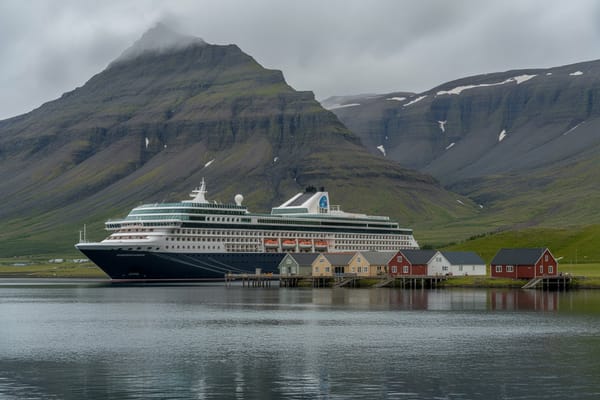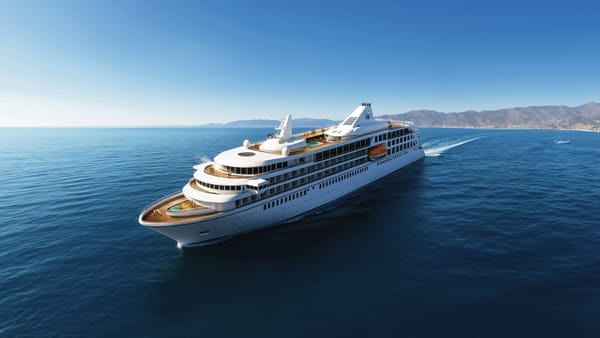Ponant's ship reaches Arctic's most remote point

In a remarkable achievement for the expedition cruising sector, Ponant's Le Commandant Charcot has become the first vessel to reach the North Pole of Inaccessibility. This point, considered one of the most remote locations on Earth, is located at coordinates 85°48’ North and 176°09’ East, representing the farthest point in the Arctic Ocean from any landmass or open water.
Le Commandant Charcot's milestone journey occurred on September 12, 2024, when the expedition was complemented by an international team of 20 scientists onboard. They commemorated this momentous occasion alongside passengers, making it not only a feat of navigation but also an important scientific expedition.
The Historical Significance of the North Pole of Inaccessibility
The North Pole of Inaccessibility had previously only been acknowledged through aerial reconnaissance, with the first flyover conducted by Hubert Wilkins in 1927. This marks a significant advancement in exploring remote regions, as no one had physically set foot on this point until the arrival of Le Commandant Charcot.
Expedition Cruising and Environmental Awareness
Expedition cruising offers a unique blend of adventure and education, drawing attention to the importance of remote destinations and the ongoing challenges they face due to climate change. Le Commandant Charcot, with its high Polar Class 2 certification, signifies a shift towards more robust and environmentally friendly vessels capable of navigating icy waters year-round.
Innovative Features of Le Commandant Charcot
Beyond its historical exploits, Le Commandant Charcot features significant innovations such as a hybrid electric engine and the use of LNG as fuel. This technological prowess not only enhances its operational capabilities but also contributes to a more sustainable cruising experience.
Crossing Historic Markers
During its expedition itinerary from Nome, Alaska to Longyearbyen in Spitsbergen, the ship also crossed notable geographic markers such as the magnetic North Pole on September 13 and the geographic North Pole on September 15. These achievements solidify its role in the narrative of modern-day exploration.
The Role of Scientists and Passengers Aboard
The presence of a dedicated team of scientists on this voyage underscores the dual purpose of modern expedition cruises: adventure and research. As passengers engage with the scientific efforts, they gain insight into the intricate environmental dynamics of Arctic regions.
Understanding Expedition Cruising
Expedition cruising blends traditional cruising with adventure-focused itineraries, often venturing into fewer-traveled waters. This growing niche aligns with consumers' increasing desire for unique travel experiences and education about destinations.
Benefits of Expedition Cruising
Expedition cruises often promise intimate experiences with nature and wildlife, guiding passengers through pristine environments with knowledgeable experts. These cruises cater to travelers eager for more than just relaxation; they seek adventure and insight.
Future of Expedition Cruising
The success of Le Commandant Charcot’s voyage may inspire further innovations in expedition cruising, promoting environmental stewardship while pushing the boundaries of exploration. Advances in ship technology will likely play a pivotal role in the industry's future.
Climate Change Implications
As access to remote locations becomes more feasible, expedition cruises also raise awareness about climate change and its impact on vulnerable ecosystems. Companies like Ponant are crucial in providing platforms for scientific exploration, which can influence policy and conservation efforts.
Conclusion
Ponant's successful journey to the North Pole of Inaccessibility highlights a significant achievement in expedition cruising, showcasing modern capabilities in maritime exploration. This milestone not only entertains adventurous travelers but also promotes a vital dialogue about environmental issues affecting our planet's polar regions.
FAQs
What is expedition cruising?
Expedition cruising combines traditional cruise experiences with adventure itineraries, often focusing on less-explored regions and involving educational components.
What are the environmental benefits of expedition cruising?
Many expedition cruise lines employ eco-friendly technologies and practices that minimize their carbon footprint and promote conservation efforts in vulnerable areas.
What type of activities can passengers expect on an expedition cruise?
Activities often include wildlife viewing, hiking, kayaking, and enrichment programs led by experts to enhance understanding of the visited regions.
How does the North Pole of Inaccessibility differ from the North Pole?
The North Pole is the point in the Arctic Ocean that defines the geographic North Pole, while the North Pole of Inaccessibility is the farthest point from any land or open water, making it a significant remote location.
What is the future outlook for expedition cruising?
The future of expedition cruising looks promising, with advancements in ship technology, increasing interest in unique travel experiences, and a growing emphasis on environmental sustainability.




